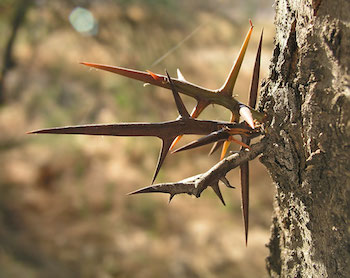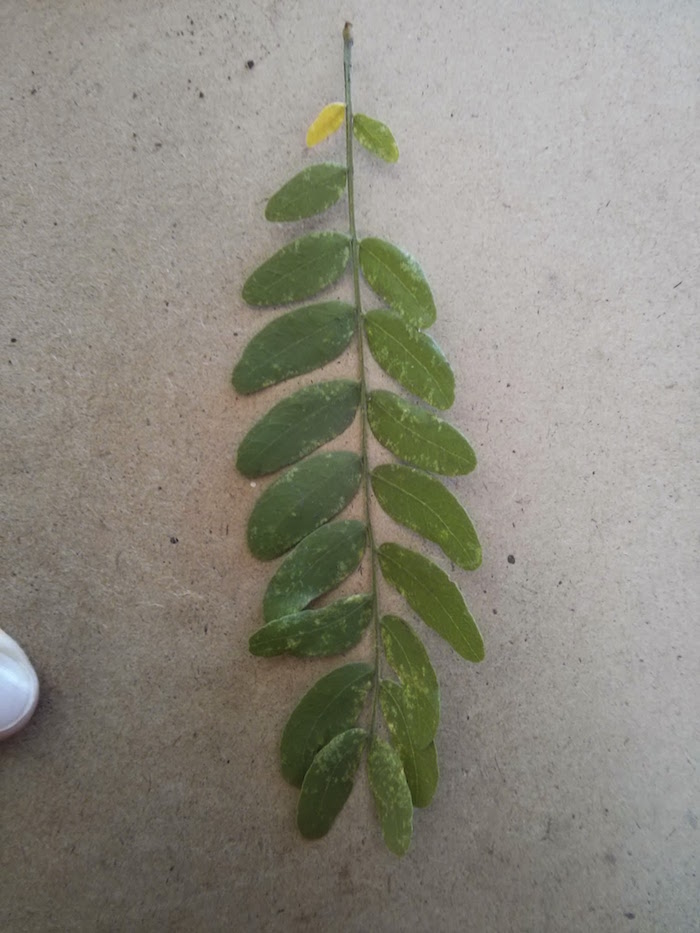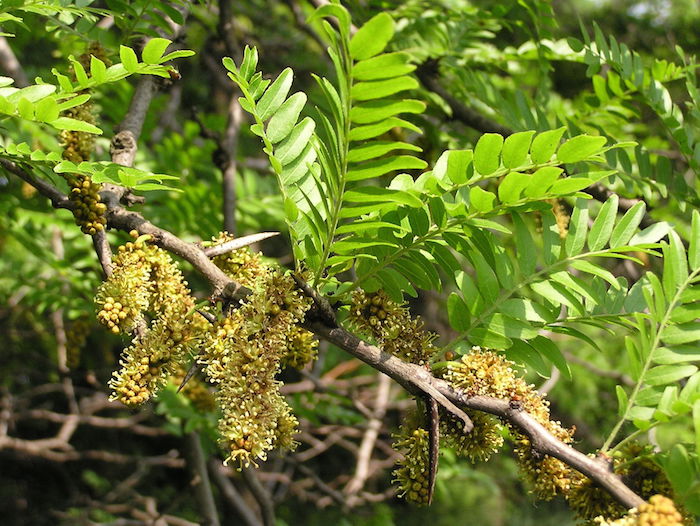
Description:
Honey locust is a beautiful species of shade tree commonly found in Minnesota. Leaves are compound and alternate, with 3-6 side branches each containing many round leaflets. Honey locusts are often dioecious, meaning that trees have either male or females flowers, but it is not always so. Both male and female flowers are greenish-white, fragrant, hanging clusters. Female flowers develop into large, flat, dark brown seed pods, typical of fabaceous plants. The bark is blackish to grayish-brown, with smooth, plate-like patches separated by furrows.
Wild honey locust have large, sharp thorns up to 20 centimeters long. Most landscape honey locusts are a bred variety, G. triacanthos var. inermis, that does not have thorns (inermis means ‘unarmed’). The common name comes from the sweet fruit within the seed pods. Some Native American tribes used the fruit as a sweetener, although it can be a throat irritant. The seeds have also been roasted and used a coffee substitute.
The native range of honey locust ends just south of the Minnesota border in Iowa, but the trees are now often found in the landscape and as street trees, as they grow quickly and can survive in adverse urban conditions, such as hot, dry parking lots.
Issues:
Honey locust are very susceptible to numerous fungal pests. Interestingly, G. triacanthos var. inermis is highly susceptible to Nectria canker, caused by the fungus Nectria cinnabarina, while the wild, thorned honey locust is not.
Other Resources:





